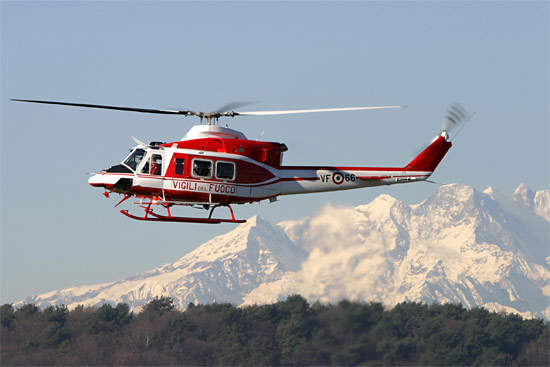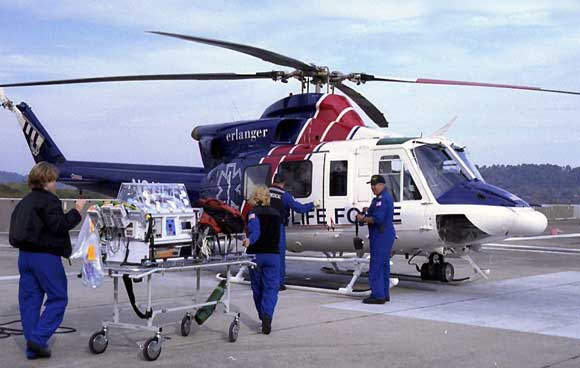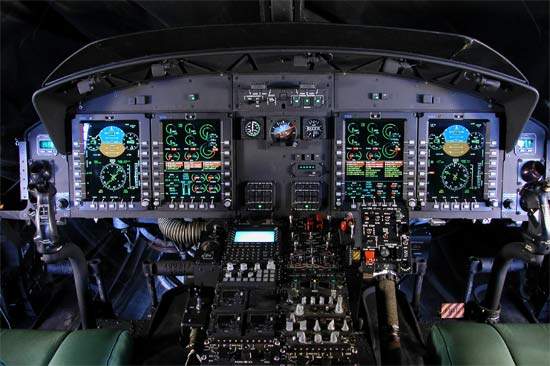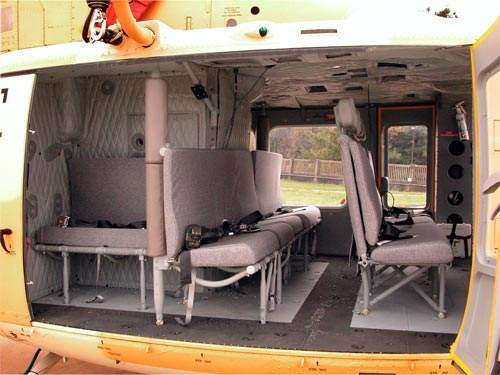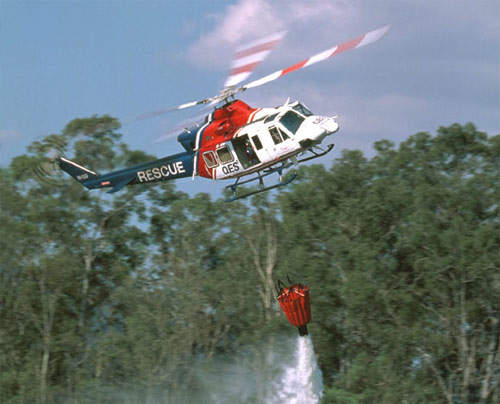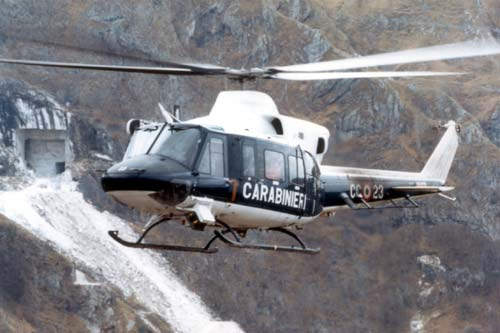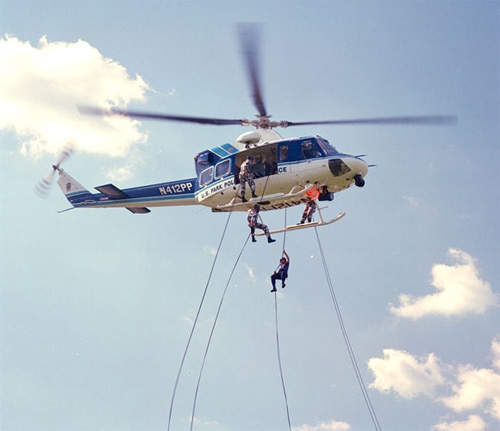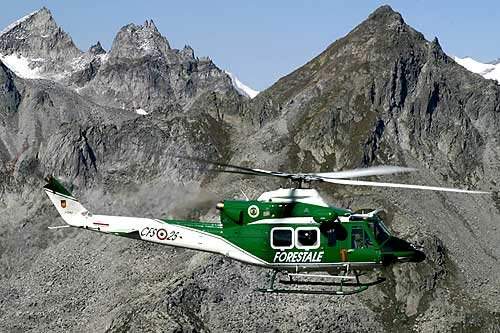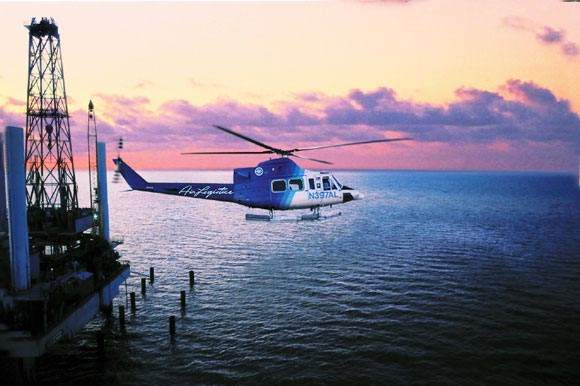The 412 helicopter is manufactured by Bell Helicopters and AgustaWestland under a licensed production arrangement for the European, African and Middle East civil and military markets.
The development of Bell 412 began in the 1970s with the conversion of two Bell 212 helicopters into Bell 412 prototypes.
The first flight of the Bell 412 was completed in August 1979 and the Agusta Bell AB 412 first flew in January 1981. Since then, 869 were produced and are operational worldwide, including 260 manufactured by AgustaWestland.
Several military, paramilitary and civil passenger and utility variants of the helicopter are operational, including firefighting, emergency services, police, search and rescue, coast guard, air ambulance, utility helicopter and airborne surveillance.
In August 2007, the Government of Bahrain requested the sale of six Bell 412 helicopters for use in search and rescue. In November 2007, the Chilean Air Force placed an order for 12 helicopters for search and rescue and transport missions.
In November 2010, five Bell 412 helicopters deployed by the Hondurian Air Force were upgraded by UniFlight, a Bell Helicopter customer service facility based in Texas, US.
The work included modernising and examining the airframe, avionics, engines and all dynamic components of the helicopter.
Bell 412 variants
The Bell 412 has 12 variants, which are Bell 412EP, Bell 412HP, Bell 412SP, Military 412, CH-146 Griffon, Bell Griffin HT1, Bell Griffin HAR2, Agusta-Bell AB 412, Agusta-Bell AB 412EP, Agusta-Bell AB 412 Grifone, Agusta-Bell AB 412 CRESO and NBell 412.
Helicopter features
The 412 structure incorporates many safety features, including a rupture-resistant fuel system; jettisonable crew doors; sturdy construction and bulkheads for roll-over protection; wire strike protection on the nose; dual redundant electrical, hydraulic and fuel systems; dual digital flight control and a rugged high-reliability twin pack engine.
It is also fitted with rotors and controls system, transmission drive systems, communication and navigation system, hydraulic and fuel systems and dual digital flight control.
Bell 412 cockpit
The cockpit has two crashworthy energy-absorbing pilot seats and collectively mounted twist-grip throttles, which allow the pilot to manage or adjust the power without releasing the primary flight controls. The helicopter is certified for single-pilot instrument flight rules operation and can carry up to 15 people.
The avionics suite includes a three-axis autopilot to reduce crew workload and fatigue and allow the crew to concentrate on successful completion of the mission. The flight deck is fitted with a four-screen electronic flight information system.
Other avionics equipment includes dual VHF radios, cockpit voice recorder, flight data recorder equipment, standby attitude indicator, MST-67A transponder, dual VOR/ILS/MB omni-directional radio range / instrument landing system / magnetic bearing, automatic direction finder, distance measuring equipment, radar altimeter, weather radar and an emergency locator transponder (ELT) system.
Bell 412 cabin
The cabin provides comfortable seating for up to 13 people. The cabin is fitted with four push-out windows for emergency egress. A 28ft³ baggage compartment in the tail boom can carry loads up to 180kg.
Emergency medical services
The helicopter can be fitted with an optional four-axis autopilot which provides ‘hands-off’ search and rescue procedures and also ‘hands-off’ automatic approach.
The 220ft³ capacity cabin configured for the emergency medical services role can carry up to six patients or survivors plus two medical attendants. An alternative configuration accommodates two critical stretcher patients and four medical attendants.
Sliding doors, 2.34m wide, on both sides of the fuselage allow easy, safe and fast access for multiple patient loading or for loading life support units or neonatal intensive care units.
Turboshaft engine
The helicopter is powered by a Pratt & Whitney Canada turbo twin pack power plant model PT6T-3B-1 with two turboshaft engines producing a total 1,044kW take-off power and 843kW continuous power.
For the one-engine-inoperable flight, a single-engine can produce a maximum power of up to 723kW for 30 minutes. The operational history of the PT6 Twin-Pac engine records that it has the lowest in-flight shutdown rate of any turboshaft engine.
The fuel tanks with a total capacity of 1,249l comprise seven rupture-resistant tanks with breakaway automatic shut off valves.
For long-range operations, the helicopter can be fitted with auxiliary fuel tanks which provide a total fuel capacity of 1,870l and give an extended range of about 980km.
Bell 412 performance
The Bell 412 can climb at the rate of 6.86m/s. The maximum and cruise speeds of the helicopter are 259km/h and 226km/h respectively. The range is 745km, which can be extended up to 980km. The service ceiling is 6,096m. The maximum endurance of the helicopter is three and a half hours. The helicopter weighs around 2,920kg and its maximum take-off weight is 5,398kg.

